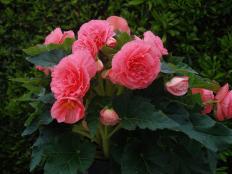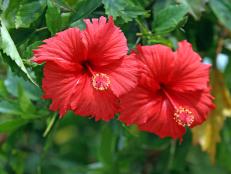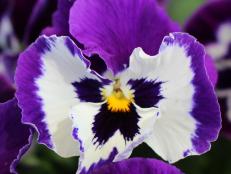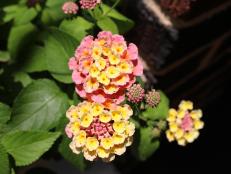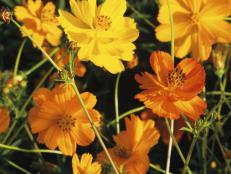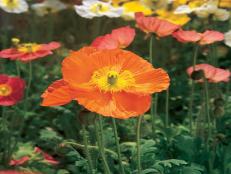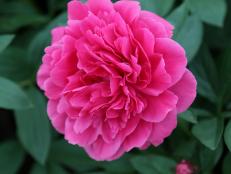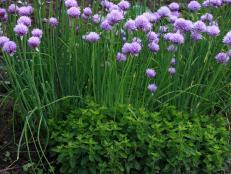How to Grow and Care for Gardenia Plants
For those in warmer climates, gardenias make a stunning and scent-filled addition to the landscape or outdoor containers, while those in colder climates can cultivate this plant indoors. Either way, you'll look forward to the smell of these sweet perennials year after year.
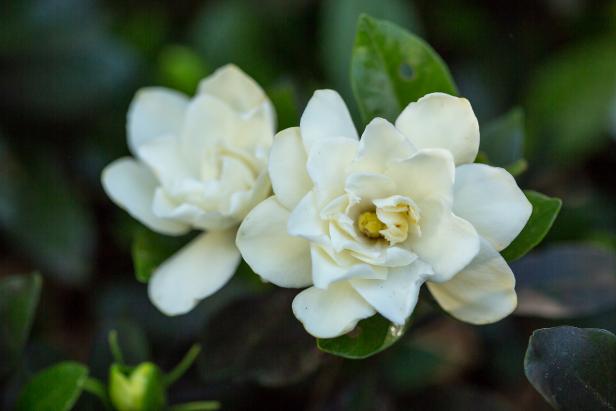
BaileyNurseries.com
Gardenia delivers fragrance — and ‘Sweet Tea’ is no exception. Pure white, tennis ball-size blooms contrast beautifully with waxy, deep green leaves. Plants grow 3 to 5 feet tall and wide, with a strong upright shape.
Gardenia is an evergreen shrub, typically hardy in USDA Zones 8 to 11, that’s beloved for intoxicatingly fragrant, creamy white flowers and thick, glossy leaves. Thanks to smart breeding, some newer varieties are known to be hardy to Zone 7 or even Zone 6.
Named for Alexander Garden, a Scottish physician and botanist who lived in Charleston, South Carolina, in the late 1700s, the gardenia is actually native to China and Japan. The bushy plants can reach 8 feet tall, but some varieties are shorter in stature. Long-lasting blooms appear mostly in spring and summer, though some varieties bloom again in fall. No matter the season, if you have gardenias in your garden, passersby will be sure to smell them well before they see them.
How to Use Gardenia
When planted in the right spot, gardenia is a versatile shrub that will thrive for many years.
In the Landscape
Where they are hardy — including the Southeast and West Coast — gardenias are useful in shrub borders or as landscape accents. Plant them near a path or next to a deck, patio, swimming pool or other sitting area so you can really appreciate the perfume. Pair with other classic shrubs such as roses and hydrangeas.
In Containers
In zones where winters are colder, grow in pots; enjoy them as houseplants in the winter and set them outside for the warmer months. Combine with purple-hued foliage plants like heuchera for contrast in a container.
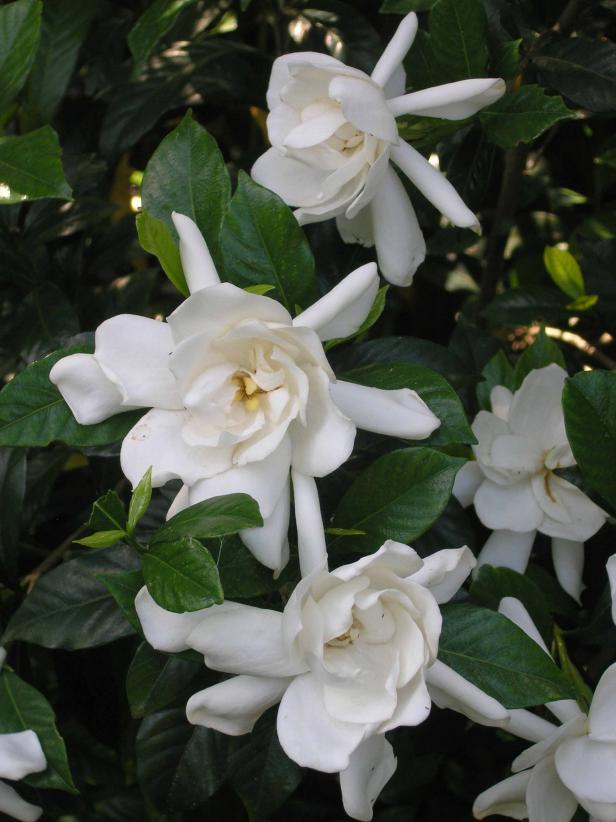
Gardenia flowers are intensely fragrant, particularly on humid summer evenings. Almost as impactful are the high-gloss dark green leaves that remain intact year-round.
How to Grow Gardenia
Gardenias usually perform best in full sun but may appreciate shade during the hottest part of the day in the warmest parts of their hardiness range. They seem to grow best in humid areas and don’t tolerate drought or arid conditions well.
Planting
In fall or spring, plant your gardenia shrub in acidic (pH 5.0-6.5), humus-rich soil and provide good opportunity for drainage. (If you’re unsure of your general soil pH, get a soil test.) Plant in a wide hole in soil amended with bark or compost to help with drainage. Gardenias don’t love competition, so be sure there is room for the roots to spread out; after planting, try not to disturb roots. Outdoor gardenias will do well in raised beds where soil can be tweaked easily and drainage is better; for indoor pots, be sure the plants aren’t left in standing water, such as in a saucer.
Watering and Mulching
Gardenias need at least an inch of water a week, whether from rainfall or a hose. Apply mulch to a depth of two to four inches to help keep moisture in the soil and control water-hogging weeds. Don’t let the plants become completely dry before you water, and water regularly. If you’re inconsistent, the buds and leaves may drop off.
Feeding
In spring and again in mid-summer, apply a dose of fertilizer meant for acid-loving plants, following the label instructions. Plants may also enjoy regular doses of coffee grounds, which provide a slightly acidic mulch, as well as applications of fish emulsion or blood meal, which can help raise the acidity of soil.
Pruning
Don’t be alarmed when those heady, milky white flowers turn one yucky shade of brown; it doesn’t mean your shrub is dying – just that its blooms have faded. The plant can be tip pruned just after flowering, but don’t prune the shrub any later than August or you could decrease next year’s blooms by removing buds that are already forming. If gardenias are growing under the right conditions, very little pruning should be needed.
Winter Protection
In fall around the first frost, apply a heavy layer of mulch around plants to protect roots from winter cold. Plants experience cold damage at 15 degrees Fahrenheit and lower, so be sure to cover plants with a breathable fabric or other materials on those coldest nights.
Propagation
Gardenia is one of the easiest shrubs of all to root. Simply cut off the tip end of a branch in mid-summer, strip off any blooms and a few lower leaves, and stick in a bottle of water. Roots will be visible in just days, and the cutting can be planted within a month.
How to Care for Gardenias in Pots
Remember: Gardenias grow best in heat and humidity. Indoors, you’ll need to mimic those conditions. Place your plants in a room where the temperature ranges from 55 to 75 degrees. Provide plenty of bright light, but keep them out of hot, direct sun. Raise the humidity by growing them in pots atop trays filled with pebbles and water, or by using a humidifier, or by misting them.
Common Gardenia Problems and Solutions
Gardenias are known to be a bit fussy. Even with the best of intentions, a gardener may still encounter problems.
Yellow Leaves
When grown in alkaline soils or areas with hard water, leaves may turn pale green or yellow between the veins, indicating chlorosis (when a plant is starved for iron) and a need for an iron fertilizer supplement. To treat chlorosis, add water-soluble sulfur or aluminum sulfate (according to package instructions) to the ground about 3 feet away from the plant. As an alternative, add chelated iron to the soil or directly to the leaves. Once the pH of the soil is adjusted, keep it in the proper range by using a slow-release fertilizer for acid-loving plants.
13 Fragrant Shrubs 13 Photos
Of course gardenia is among our favorite fragrant shrubs.
Whiteflies and Aphids
Gardenia can be plagued by pests such as whiteflies and aphids, which can exude partly digested sap called honeydew that leaves a sticky residue. Just wet plants down with soapy water or insecticidal soap and rinse with clear water.
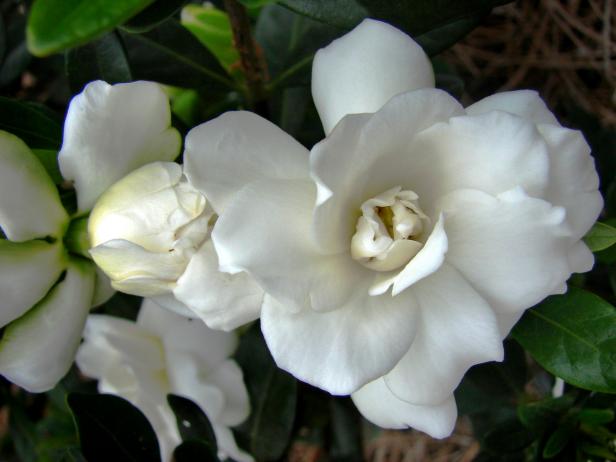
BaileyNurseries.com
Gardenia varieties can be single-flowering or double-flowering. As a double-flowering variety, 'Double Mint' blooms in spring and again in fall.
Selected Gardenia Cultivars
With more than 250 species, there’s a gardenia for every situation – especially patios, walkways and container gardens where their fragrance can be most enjoyed up-close and personal. These are just a handful to seek out.
'Veitchiana' (or 'Veitchii') — Dense, compact, slow-growing plants with double white flowers, a classic for containers.
'Mystery' — Both the leaves and the double flowers are larger than those of most gardenias; the plants tend to be more vigorous as well.
'Radicans' — A dwarf, spreading gardenia often used as a groundcover.
'Summer Snow' — One of the newer cold-hardy cultivars that can grow even in USDA Zone 6 with mulch to protect the lower trunk from freezing.
'Sweet Star' – Proven to be hardy in Zone 7, this single-flower variety originated from wild collected seed from the Beijing Botanical Garden.







